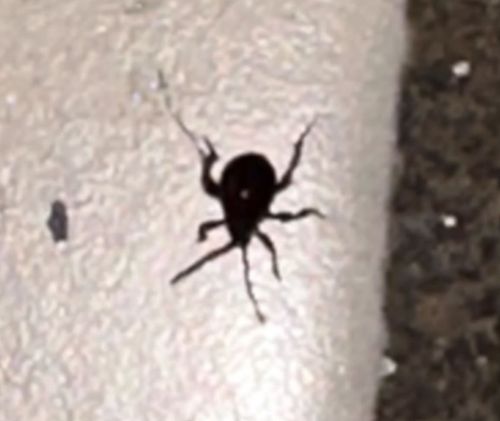Tick
Scientific Name: Ixodida (specific genus/species cannot be determined from the image, could be *Dermacentor*, *Ixodes*, *Amblyomma*, etc.)
Order & Family: Order: Ixodida (formerly part of Acari, subclass Acari); Family: Either Ixodidae (hard ticks) or Argasidae (soft ticks). Given the body shape, it strongly resembles a hard tick.
Size: Typically 1 mm to 10 mm (unfed to engorged) depending on the species and life stage. Larval ticks can be as small as 0.5 mm, nymphs 1-2 mm, and adult females can swell up to 10-15 mm when fully engorged with blood.

Natural Habitat
Widely diverse, commonly found in wooded areas, tall grasses, brush, leaf litter, and urban settings like parks and gardens. They prefer humid environments.
Diet & Feeding
Blood (obligate hematophagy) from various vertebrate hosts including mammals, birds, and reptiles.
Behavior Patterns
Ticks undergo four life stages: egg, larva, nymph, and adult. Each active stage (larva, nymph, adult) requires a blood meal to molt to the next stage or for reproduction (adult females). They do not fly or jump but instead wait on vegetation for a host to pass by, a behavior known as 'questing.' The specific species is hard to determine from the image, but many tick species are active during warmer months, though some can be found in winter.
Risks & Benefits
Risks: Ticks are significant vectors for numerous diseases, including Lyme disease, Rocky Mountain spotted fever, anaplasmosis, ehrlichiosis, babesiosis, and Powassan virus, among others. Their bites can also cause local irritation, allergic reactions, and in rare cases, tick paralysis. Benefits: While their role in the ecosystem is primarily as parasites, they are a food source for some animals (e.g., birds, certain insects). However, their negative impact as disease vectors far outweighs any perceived ecological benefits from a human perspective.
Identified on: 8/23/2025